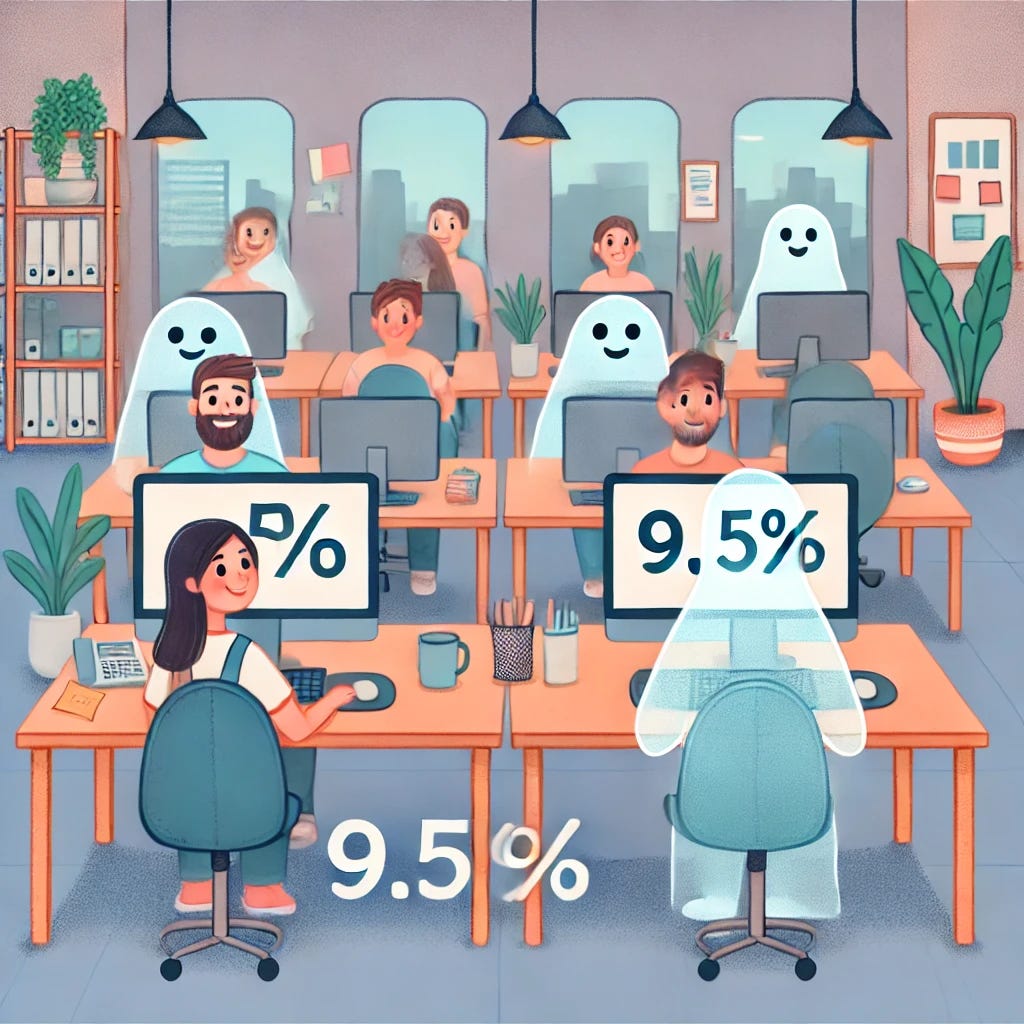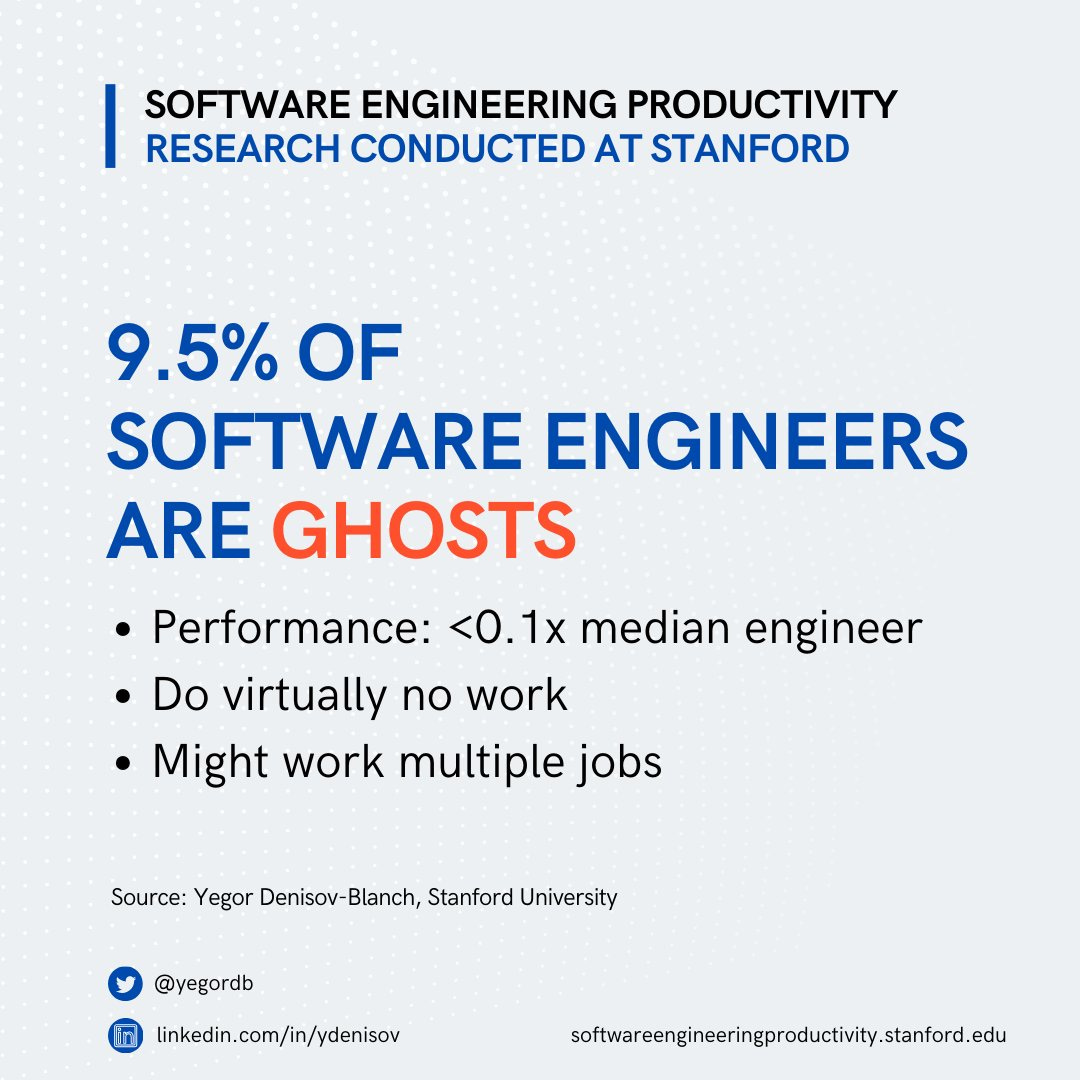9.5% of Software Engineers are Ghost-Workers: Stanford Study
As companies and policymakers digest the implications of this research, one thing is clear—the ghost engineer phenomenon is more than an anomaly.
The Ghost Engineer Phenomenon: A Modern Workplace Challenge
In a striking revelation, recent research from Stanford University has spotlighted a growing concern within the software industry—the rise of "ghost engineers." This phenomenon is not only reshaping how companies view productivity but also prompting questions about broader workplace dynamics across industries.
Unveiling the Ghost Engineer: Research Findings
Stanford University's Yegor Denisov-Blanch led the groundbreaking study, identifying that 9.5% of software engineers fall into the category of "ghosts." These individuals, despite holding legitimate positions within organizations, exhibit an astonishingly low productivity rate—less than 0.1 times the output of a median engineer. Essentially, they contribute almost nothing of substance to their teams while continuing to collect their salaries.
The most perplexing aspect? Many of these professionals successfully maintain their roles without raising significant red flags, blending into the organizational fabric while evading scrutiny.
A Link to Overemployment
One plausible explanation for this trend is the practice of overemployment, where individuals hold multiple jobs simultaneously. By splitting their focus across several roles, ghost engineers deliver minimal effort in any single position, effectively gaming the system. This raises critical ethical questions and challenges traditional workforce models, particularly in industries that rely heavily on remote work and flexible schedules.
Bureaucracies: A Ghostly Parallel?
The ghost engineer phenomenon has sparked comparisons to patterns observed in bureaucratic institutions, where productivity and efficiency often follow the Pareto Principle—20% of individuals perform 80% of the work.
The Bureaucratic Efficiency Paradox
In bureaucracies, some argue that having only a small fraction of the workforce actively engaged may paradoxically enhance efficiency. I facetiously tweeted: “My sense is that it bureaucracies only 10% of the people are working. Which is just as well because if more were working, a greater mess would be created.”
On a more serious plane, increased activity could lead to "busywork" or complications, highlighting a stark contrast between the tech sector's productivity-driven culture and the more process-oriented nature of bureaucracies. This paradox underscores how industries with differing goals grapple with workforce inefficiencies in unique ways.
Implications Across Industries
The emergence of ghost engineers raises pressing questions about the modern workplace:
Productivity Metrics: How can organizations better identify and address underperformance?
Hiring and Retention: Are traditional hiring practices inadvertently creating opportunities for ghost engineers?
Resource Allocation: How can companies ensure resources are optimally utilized?
Performance Monitoring: What systems can prevent individuals from slipping under the radar?
Organizational Design: Should structures evolve to minimize the potential for overemployment exploitation?
The study signals a need for innovative approaches to workforce management across both private and public sectors. While the challenges faced by tech companies may differ from those in bureaucracies, the fundamental goal remains the same: to build and sustain productive, ethical, and efficient organizations.
The Road Ahead
As companies and policymakers digest the implications of this research, one thing is clear—the ghost engineer phenomenon is more than an anomaly. It reflects the evolving nature of work in a world increasingly defined by remote opportunities, flexible schedules, and digital tools. Addressing this challenge will require a mix of vigilance, adaptability, and a commitment to fostering workplace cultures that prioritize transparency and accountability.



